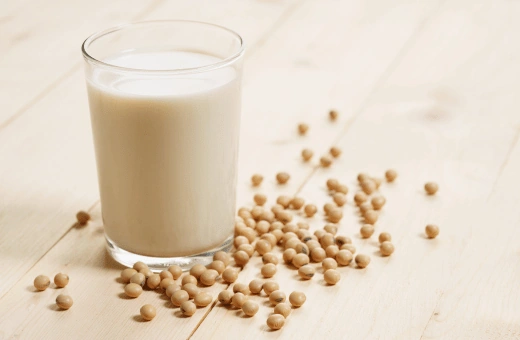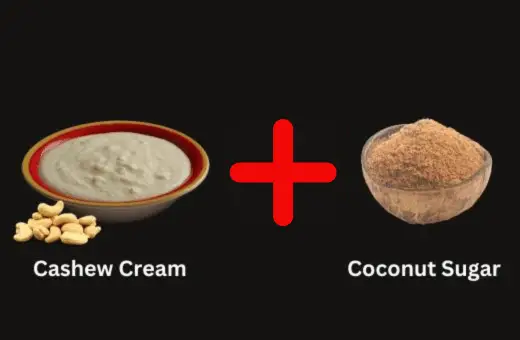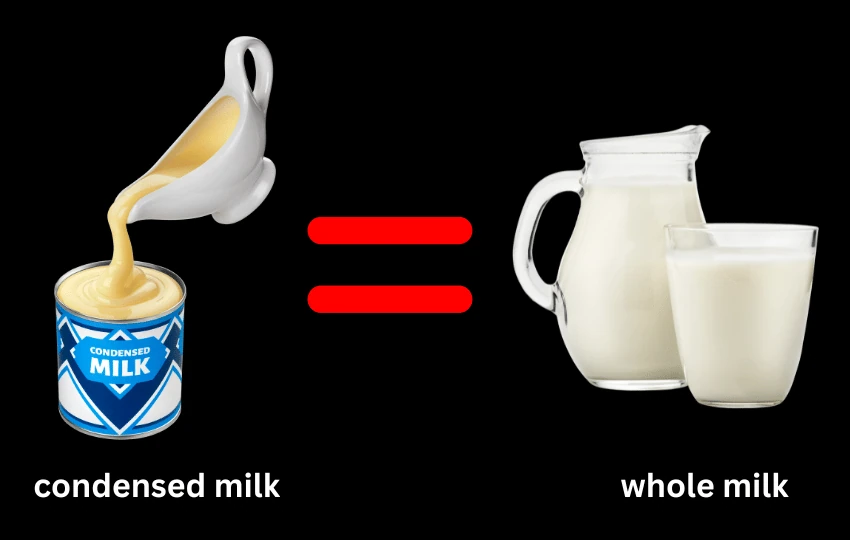As an experienced home cook and chef, I understand the importance of alternative ingredients and substitutions.
Sometimes, you may run out of a particular ingredient, or you may want to experiment with new flavors without having to run to the grocery store.
The most common question that can be asked is whether you can substitute condensed milk for whole milk.
The short answer is yes, but there’re a few things you should know.
Keep reading to learn additional about the proper ratios and how to use condensed milk in place of whole milk.
What is condensed milk, and what does condensed milk taste like?
Condensed milk is a dense, sweetened dairy product made from cow’s milk. It has had the water content of the original milk removed and then sugar added to create a rich, creamy substance.
Condensed milk has a distinctively sweet taste that combines the flavors of both dairy and sugar.
There are two main types of condensed milk available: sweetened condensed milk and evaporated milk.
Sweetened condensed milk is made from whole milk with sugar added for sweetness, whereas evaporated milk is unsweetened canned milk that has been boiled down to a thicker consistency.
To ensure you’re using the proper one for your recipe, check the ingredients list on the can or package before purchasing.
As with all dairy products, they should be stored properly in the refrigerator once opened or purchased in order to maintain their freshness.
Uses of condensed milk
Condensed milk is a great ingredient to have in your pantry as it can be used for many different recipes.
In baking, it adds sweetness and moisture to cakes, cookies and other desserts. Also, it can be added to hot beverages like coffee for a creamy texture and flavor.
In cooking, condensed milk is often used as an ingredient for sauces, glazes, fillings and frostings. Also, it can be used in savory dishes such as curries or soups to add a rich flavor.
Additionally, many people enjoy using condensed milk straight from the can on its own or as a topping over ice cream or fruit. Condensed milk is truly versatile!
With its sweet, creamy flavor and texture, it’s no wonder why this ingredient is so popular in many different recipes.
When using condensed milk in your cooking and baking, be sure to read the label carefully to ensure you are getting the type of milk that best suits your recipe.
About Whole milk and uses
Whole milk is a type of cow’s milk that contains the full-fat content in it. This type of milk offers several beneficial nutrients, such as calcium, protein, and vitamins A and D.
For those persons who are health-conscious but still want to enjoy dairy products, whole milk is a good alternative because it has more nutritional value than low-fat varieties.
Whole milk can be used for drinking as well as cooking, baking and other recipes. It makes an excellent base for smoothies and shakes as well as creamy sauces such as Alfredo sauce or cheese sauce.
For making yogurt, it can also be used and other fermented dairy products like kefir and paneer.
Additionally, whole milk is often used to make ice cream or other frozen dessert treats. Whole milk is a great source of essential nutrients, making it an important part of any healthy diet.
It is also used in numerous recipes to give them a creamy texture and flavor.
Overall, whole milk is an excellent choice for people who are looking for a nutrient-dense dairy product that can be used in many different ways.
Whether you’re adding it to smoothies or using it in baking recipes, this type of cow’s milk can provide plenty of beneficial nutrients that your body needs.
When shopping for whole milk, look for labels that say “whole” because this will ensure you are getting the full-fat content in the product. Look for organic varieties if possible.
Condensed milk VS Whole Milk- What’s the difference?
The primary difference between condensed milk and whole milk is the amount of moisture content. Condensed milk is made by heating cow’s milk until about 60% of its water content has been removed.
The resulting product is a dense, sweet syrup with a higher sugar content than regular milk.
In contrast, whole milk contains all of the original components of cow’s milk, including fat, vitamins, minerals and protein.
When it comes to texture, condensed milk is much thicker and creamier than whole milk. This makes it perfect for use in baking or dessert recipes such as ice cream and custard.
Whole milk typically has a thinner consistency that can be used in coffee or cereal as-is or blended into smoothies and other beverages.
When it comes to taste, condensed milk is much sweeter than whole milk due to the addition of sugar.
The fat content of condensed milk is higher than that of whole milk since some of the water has been removed during its production process.
As for uses, condensed milk is often used as a baking ingredient or sweetener for coffee and tea, while whole milk may be used for drinking or cooking purposes.
In terms of fat content, condensed milk usually contains 8-10% fat, while whole milk contains 3-4%.
Condensed milk also tends to have twice the amount of calories as regular whole milk because of its added sugar content (240 calories per cup versus 122 calories).
However, many brands offer reduced-fat varieties with less fat than standard condensed milk without sacrificing sweetness or texture.
In terms of consistency, condensed milk is thicker than whole milk due to having less water content.
Condensed milk also has a longer shelf life than regular-fat cow’s milk since most of the water has been removed, meaning it can last for over a year without refrigeration.
Condensed milk is also known for being shelf stable; due to its high sugar concentration, it can last for months at room temperature without refrigeration, unlike regular fresh milk, which must be stored in the refrigerator to avoid spoiling.
Whole milk is typically found commercially pasteurized and homogenized for shelf stability but still needs to be kept chilled until ready for use.
Overall, condensed milk and whole milk have distinct differences in terms of taste, fat content, uses, consistency, and more.
Therefore when making a decision about which type to use for your needs, it is important to be aware of these differences so you make the right choice.
What are the similarities between condensed milk and whole milk?
Both condensed milk and whole milk are dairy products that come from cows. They both contain nutrients like calcium, potassium, vitamin D, phosphorus, riboflavin and protein.
Both types of milk also contain lactose sugar for sweetness.
Consistency is the main difference between them; condensed milk is thicker and sweeter due to its sugar content, while whole milk has a thinner texture.
Condensed milk can be used as an alternative to cream in baking recipes, or it can be sweetened further to make dulce de leche or other forms of caramelized sweetened milk.
It is also be used in savory recipes, like sauces and curries. Whole milk, on the other hand, is generally consumed as a drink or added to coffee or tea.
It is also used for cooking and baking, but it has a much thinner consistency than condensed milk, so it won’t produce the same level of richness or sweetness as condensed milk does.
The fat content of whole milk and condensed milk also varies; whole milk contains more fat than condensed milk.
Ultimately, both types of milk have their own merits and nutrition benefits; it just depends on what you are looking for in your dairy products!
Can I substitute condensed milk for whole milk?
First, let’s start by understanding the difference between condensed milk and whole milk. Condensed milk is basically whole milk that has been heated and has its water content removed.
It is much thicker and sweeter than whole milk and is commonly used in baking and desserts.
If you want to substitute condensed milk for whole milk in a recipe, the first thing you need to consider is the sweetness.
Since condensed milk is much sweeter than whole milk, you’ll need to adjust the sugar content of your recipe accordingly.
For example, if you’re making a cake recipe that calls for one cup of whole milk, you can use three-quarters of a cup of condensed milk and adjust the sugar measurement accordingly.
In addition to adjusting the sugar content, you may also need to adjust the water content of your recipe.
Since condensed milk has had its water content removed, you’ll need to add some water to your recipe to compensate.
The typical conversion ratio for substituting condensed milk for whole milk is 1:1.
For example, if the recipe calls for one cup of whole milk, you can use one cup of condensed milk and add one cup of water.
Another thing you need to consider when substituting condensed milk for whole milk is the texture of your recipe.
Since condensed milk is much thicker and richer than whole milk, it will change the texture of your finished product.
For example, if you are making a quiche recipe that calls for whole milk, using condensed milk may result in a much denser and creamier texture.
When using condensed milk as a substitute for whole milk, I recommend experimenting with small batches first.
This will help you get the best idea of how the substitution will affect the taste and texture of your recipe.
You can also try using evaporated milk as a substitute for whole milk, which has a milder flavor than condensed milk and won’t add any sweetness to your recipe.
How to Substitute condensed milk for whole milk?
First off, it’s important to understand the differences between condensed milk and whole milk. Condensed milk is milk that has been heated and has sugar added to it, which creates a thick, syrupy consistency.
Whole milk, on the other hand, is just that – milk that has not had anything added to it.
The two are not interchangeable in every recipe, but in some cases, you can use condensed milk as a substitute for whole milk.
The general ratio for this substitution is 1:1 – meaning if a recipe calls for 1 cup of whole milk, you can use 1 cup of condensed milk instead.
However, since condensed milk is much sweeter and thicker than whole milk, you’ll need to adjust the other ingredients in the recipe accordingly.
For example, if you’re making a cake and using condensed milk instead of whole milk, you’ll want to reduce the sugar in the recipe to compensate for the sweetness of the condensed milk.
Another thing to keep in mind is that condensed milk has a higher fat content than whole milk. This can be a good thing or a bad thing, depending on what you’re making.
If you’re making ice cream or custard, using condensed milk can result in a richer, creamier final product.
But if you’re making something that you want to be light and airy, like a mousse, using condensed milk could make it too heavy.
One way to use condensed milk as a substitution for whole milk is in coffee. Some people like to put condensed milk in their coffee instead of creamer or regular milk.
To do this, you’ll want to dilute the condensed milk with some water – a good ratio is one part condensed milk to two parts water.
This will create a consistency that’s similar to regular milk or creamer but with a sweet, caramel-like flavor.
Finally, if you’re using condensed milk as a substitution for whole milk, you’ll want to adjust the cooking time and temperature accordingly.
Since condensed milk is thicker than whole milk, it may take longer to cook or bake whatever you’re making. Keep an eye on your recipe and adjust as needed.
How much-condensed milk is equal to regular milk?
Condensed milk is a type of concentrated milk that has had the majority of its water content removed.
This results in a product that is much sweeter and thicker than regular milk, with a texture similar to syrup.
The amount of condensed milk needed to substitute for regular milk in a recipe varies depending on the recipe.
Generally speaking, you would use 1 cup of sweetened condensed milk as a substitute for 1 cup of regular milk and ¾ cup of sugar.
It should also be noted that since condensed milk has such a strong flavor, it may impact the overall outcome of the dish if used for baking or other recipes where subtle flavors are desired.
Can you replace condensed milk with regular milk?
Yes, you can replace condensed milk with regular milk. However, the taste and texture of your dish will be affected as sweetened condensed milk is much thicker and sweeter than regular milk.
To make up for the missing thickness and sweetness, you may need to add sugar and cornstarch when replacing condensed milk with regular unsweetened cows or plant-based milk.
Additionally, if the recipe calls for evaporated milk in place of sweetened condensed, it is an easy substitution since they are quite similar in consistency except that evaporated has no added sugars.
5 Best Substitutes for whole milk
Whole milk is a popular dairy product that is rich in various vitamins and minerals. However, some people may be unable to consume whole milk due to dietary restrictions, allergies, or other reasons.
Fortunately, there are many substitutes available to incorporate into one’s diet. Here are five of the best alternates for whole milk:
1. Soy Milk

Soy milk is a good option for those looking for a plant-based substitute for cow’s milk.
It contains all the same essential nutrients found in cow’s milk and can often be purchased enriched with calcium and vitamin D.
Soy milk also has the added bonus of containing no cholesterol and only small amounts of saturated fat compared to traditional whole milk.
2. Almond Milk
For those who prefer something more nutty tasting than soy, almond milk can be an ideal substitute for whole Cow’s Milk.
In addition to having a mild nutty flavor, almond milk is also high in Vitamin E, which promotes healthy skin and hair growth.
Almond milk also offers many health benefits, such as being low in calories and free from cholesterol and lactose.
3. Coconut Milk
Coconut Milk is perfect if you prefer a sweet taste that is similar to traditional cow’s milk but still want the benefits of dairy-free options like soy or almond milk.
Not only does it contain healthy fats like Omega 3 fatty acids, but it also contains lauric acid, which helps reduce inflammation throughout the body and improves digestive health.
Plus, coconut-based milk is naturally free from lactose, so they’re suitable for those with sensitivities or allergies!
4. Rice Milk
If you’re looking for a creamy substitute without any nuts, rice might just be your go-to option! Rice milk has been considered one of the most hypoallergenic options on the market.
Because it does not have any animal derivatives, nor does it produce many allergic reactions when compared to other plant-derived milk such as soy or almond milk—making it easy on sensitive stomachs too!
Rice milk is usually lighter in texture than other alternatives but still provides substantial levels of calcium and vitamin D when fortified with extra nutrients like these two essential vitamins.
5. Oat Milk

Last but definitely not least is oat milk!
Oat milk has become increasingly popular as an alternative to traditional cow’s milk over recent years due to its creamy texture that adds richness to drinks such as coffee or tea.
While providing essential minerals like zinc and magnesium, which aid digestion, support immune system function as well as help maintain strong bones & teeth health!
As oats are naturally gluten-free, too, this makes oat milk an excellent choice for those with gluten sensitivities who can’t enjoy wheat-based options like rice milk otherwise!
How can I substitute condensed milk- 5 Best Alternative to condensed milk
For those looking for an alternative to condensed milk, there are several great options that provide similar sweetness and consistency without having to use dairy.
Here are five of the good choices for condensed milk, along with their measurements:
1. Evaporated Milk

Evaporated milk is cow’s milk that has been heated until 60% of its original volume has been removed.
Ratio or measurement: To replace one cup (240ml) of condensed milk, use ¾ cup (180ml) of evaporated milk plus ¼ cup (60ml) of granulated sugar or honey.
2. Sweetened Condensed Coconut Milk
Many grocery stores carry sweetened condensed coconut milk, which is made from coconut cream, sugar and salt.
Ratio or measurement: To replace one cup (240ml) of condensed milk, use one can (14 ounces/397g) of sweetened condensed coconut milk.
3. Non-Dairy Creamer
Non-dairy creamer can be used as an alternative for both skimmed and full-fat versions of condensed milk in baking recipes such as cookies or cakes.
Ratio or measurement: To replace one cup (240ml) of condensed milk, use 1 cup (240ml) of non-dairy creamer and ⅓ cup (80ml) of maple syrup or honey.
4. Almond Milk & Maple Syrup
This vegan option is made up of almond milk and pure maple syrup, which are blended together until smooth and creamy.
Ratio or measurement: To replace one cup (240 ml) of condensed milk, combine 4 cups (960 ml) of almond milk with 1½ cups (360 ml) of pure maple syrup.
Then them in a food processor or blender until well-combined and pourable, like condensed milk consistency, before using it in your recipe.
5. Cashew Cream & Coconut Sugar

Cashew cream is made by combining cashews with liquid ingredients such as water, nut milk or plant milk like almond or oat milk, depending on what consistency you prefer for your recipe.
Ratio or measurement: To replace one cup(240 ml )of condensed milk, blend 4 cups( 960 ml ) of cashews with 2 cups( 480 ml ) of water, half a teaspoon of vanilla extract and 1/2 cup(120 ml )coconut sugar until smooth and creamy before using it in your recipe.
Wrap up on Can I substitute condensed milk for whole milk
In conclusion, yes, you can substitute condensed milk for whole milk in some recipes. The ratio is generally 1:1, but you’ll need to adjust the sugar and other ingredients accordingly.
Keep in mind that using condensed milk will make your recipe much sweeter and richer, so you’ll need to adjust the other ingredients accordingly.
Above all, the best tips I can give you are to practice and experiment to find the best ratio and to have fun with it!
Cooking is all about attempting new things and discovering what works best for you and your taste buds.
FAQs on can I substitute condensed milk for whole milk
Q1. What is similar to Condensed milk?
A popular alternative to condensed milk is evaporated milk. Evaporated milk is made by heating regular, or whole, milk until it has lost about sixty percent of its water content. This makes the resulting product thicker and creamier than regular milk but not as thick as condensed milk.
As with condensed milk, evaporated milk also has a sweeter flavor because of the sugar that was added during processing. Additionally, some brands of evaporated milk may contain added vitamin D for nutritional benefits.
However, unlike condensed milk, which is typically used in desserts and desserts-like recipes such as fudge and cheesecake, evaporated milk has more culinary applications when cooking savory dishes like sauces and soups.
It is also used for baking but might require additional sugar. Evaporated milk is a popular choice for those who are lactose intolerant since the heating process breaks down much of the lactose in regular milk. It is also used as a dairy-free substitute for traditional condensed milk in desserts and other recipes.
To make it sweeter like condensed milk would be, evaporated milk can be combined with sugar or honey to taste. Another option that is similar to condensed milk is sweetened condensed coconut milk, which has a creamy texture without the animal product found in cow’s milk.
This vegan alternative typically comes in cans and is great for making no-bake desserts like pies and tarts due to its thick consistency and sweetness.
Q2. What is similar to Whole Milk?
Other types of milk that are similar to whole milk include 2% reduced-fat milk, 1% low-fat milk and fat-free (skim) milk.
All of these milk contain the same essential vitamins and minerals as regular whole milk but with varying amounts of carbohydrates, fat and calories. Additionally, dairy alternatives such as soymilk and almond milk can be eaten in place of full-cream dairy products
Q3. How much-condensed milk from 1 liter of milk?
The amount of condensed milk that can be obtained from 1 liter of milk depends on the concentration rate of the milk. Generally speaking, it takes about 10 liters of fresh milk to make 1 liter of condensed milk.
This is because, during the process of condensing, some of the water content in the milk is removed, resulting in a thick and sweetened product. As such, 1 liter of condensed milk will contain more calcium, fat, and carbohydrates than its corresponding 1 liter of fresh milk. Additionally, condensed milk is known for its sweeter flavor compared to regular fresh milk due to the sugar added during the condensation process.

